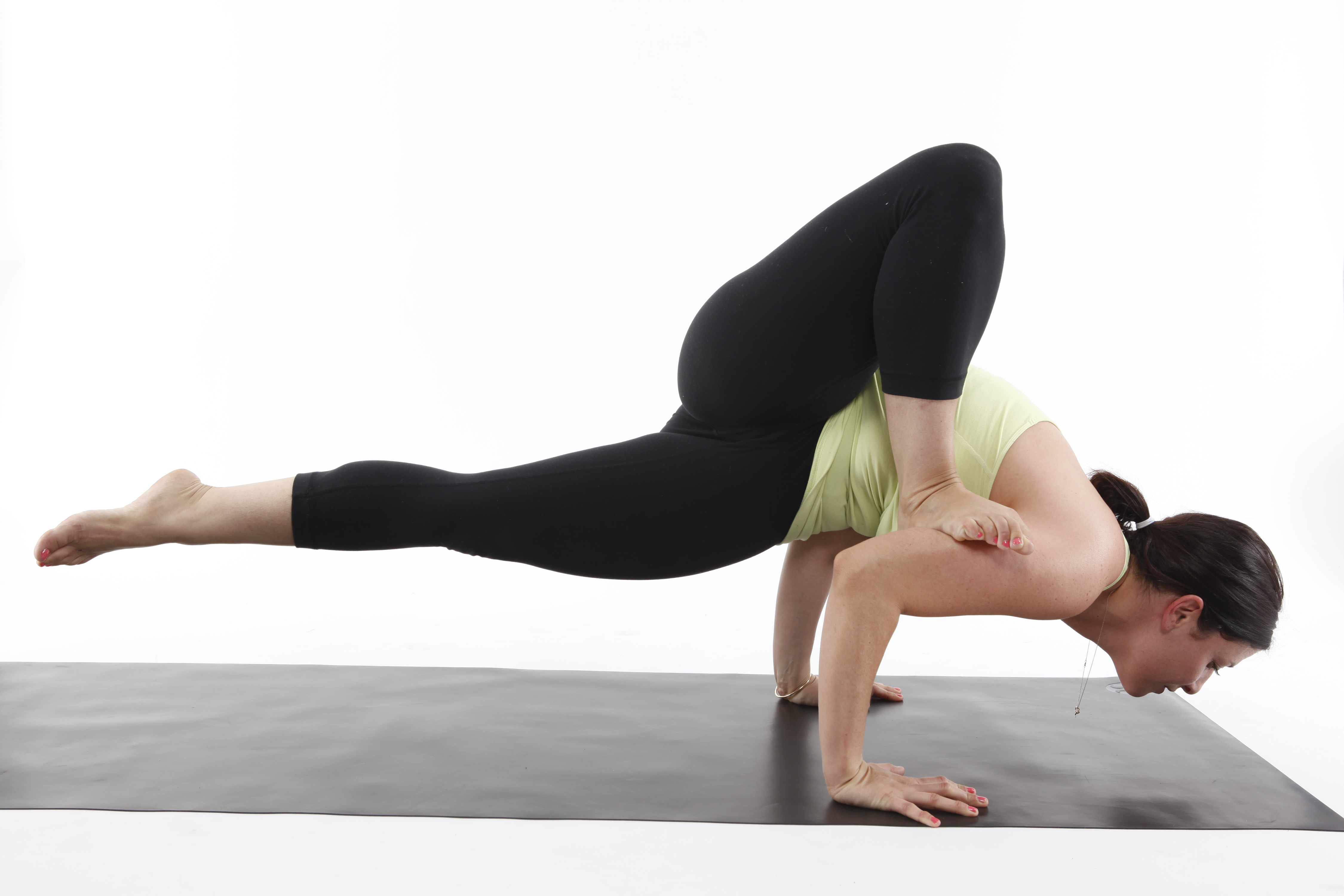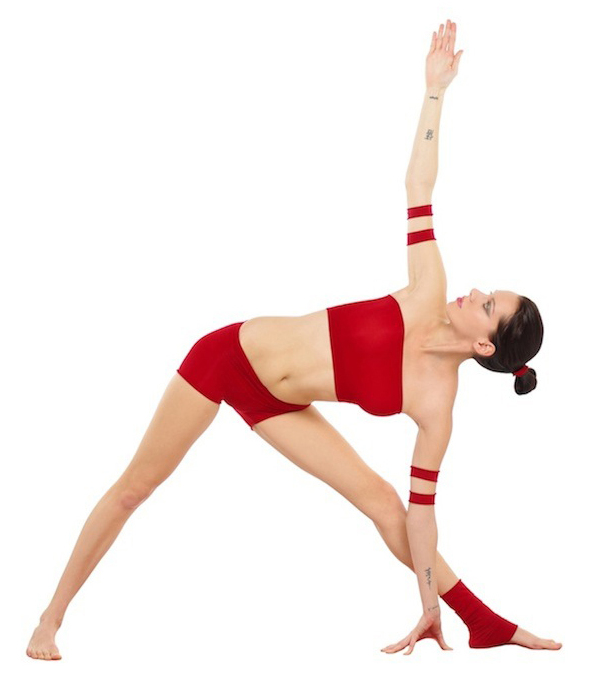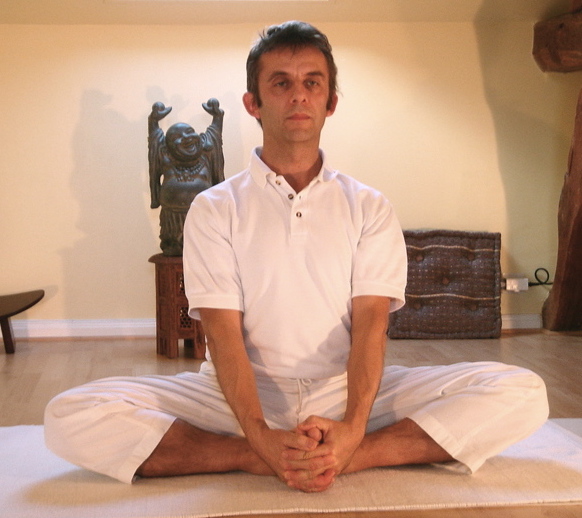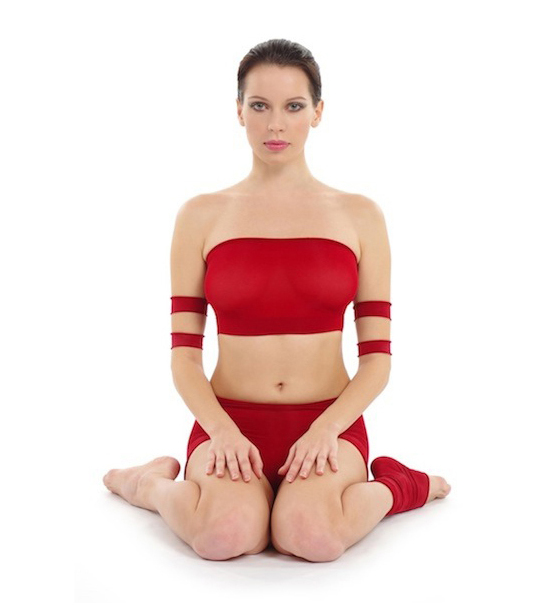|
Bharadvajasana
Bharadvajasana ( sa, भरद्वाजासन; IAST: ''Bharadvājāsana'') or Bharadvaja's twist is a twisting asana in modern yoga as exercise. Etymology and origins The asana is dedicated to the sage Bharadvāja who was one of the Seven Great Sages or Rishi. He was the father of Drona, a master of military arts and the royal guru to Kauravas, Pandavas and the Devastras, the princes who fought the great war of the Mahabharata. A different asana is illustrated under the name Bharadvajasana in the 19th century '' Sritattvanidhi''; it somewhat resembles Mayurasana with the legs in Padmasana, but as drawn it would be impossible to perform. The pose currently known by the name Bharadvajasana is a modern one, first seen in the 20th century. It is described in the works of two of Krishnamacharya's pupils, B. K. S. Iyengar's 1966 ''Light on Yoga'' and Pattabhi Jois's Ashtanga Vinyasa Yoga. Description Bharadvājāsana is a seated spinal twist. Bharadvajasana I is the ... [...More Info...] [...Related Items...] OR: [Wikipedia] [Google] [Baidu] |
Bharadvajasana Position
Bharadvajasana ( sa, भरद्वाजासन; IAST: ''Bharadvājāsana'') or Bharadvaja's twist is a twisting asana in modern yoga as exercise. Etymology and origins The asana is dedicated to the sage Bharadvāja who was one of the Seven Great Sages or Rishi. He was the father of Drona, a master of military arts and the royal guru to Kauravas, Pandavas and the Devastras, the princes who fought the great war of the Mahabharata. A different asana is illustrated under the name Bharadvajasana in the 19th century ''Sritattvanidhi The ''Sritattvanidhi'' (, "The Illustrious Treasure of Realities") is a treatise written in the 19th century in Karnataka on the iconography and iconometry of divine figures in South India. One of its sections includes instructions for, and ill ...''; it somewhat resembles Mayurasana with the legs in Padmasana, but as drawn it would be impossible to perform. The pose currently known by the name Bharadvajasana is a modern one, first ... [...More Info...] [...Related Items...] OR: [Wikipedia] [Google] [Baidu] |
Matsyendrasana
Matsyendrasana ( sa, मत्स्येन्द्रासन; IAST: ''Matsyendrāsana''), Matsyendra's Pose or Lord of the Fishes Pose, is a seated twisting asana in hatha yoga and modern yoga as exercise. The full form is the difficult Paripurna Matsyendrasana. A common and easier variant is Ardha Matsyendrasana. The asana has many variations, and in its half form is one of the twelve basic asanas in many systems of hatha yoga. Etymology and origins The name comes from the Sanskrit words परिपूर्ण ''Paripurna'', perfected; मत्स्येन्द् ''Matsyendra'', one of the founders of hatha yoga, whose name in turn means "lord of the fishes"; and आसन ''asana'', posture or seat; अर्ध ''ardha'' means half. The asana is medieval, described in the 15th century ''Haṭha Yoga Pradīpikā'' 1.26-7, which states that it destroys many diseases, and the 17th century ''Gheraṇḍa Saṃhitā'' 2.22-23. Yogi Ghamande chose the asana for the ... [...More Info...] [...Related Items...] OR: [Wikipedia] [Google] [Baidu] |
Bharadwaja
Bharadvaja ( sa, भरद्वाज, IAST: ; also spelled Bharadwaja) was one of the revered Vedic sages (maharishi) in Ancient India. He was a renowned scholar, economist, grammarian and physician. He is one of the Saptarishis (seven great sages or Maharṣis). His contributions to ancient Indian literature, specifically the '' Rigveda'', provide significant insight into ancient Indian society. He and his family of students were the authors of the sixth book of the ''Rigveda''. In the epic '' Mahabharata'', Bharadwaja was the father of the teacher (guru) Droṇācārya, the instructor to Pandava and Kaurava princes. Bharadwaja is also mentioned in ''Charaka Samhita'', an authoritative ancient Indian medical text. Etymology The word Bharadvaja is a compound Sanskrit from ''"bhara(d) and vaja(m)"'', which together mean "bringing about nourishment". the name also lends itself to more than one yoga asana called Bharadvajasana (“nourishing pose”) named after the sage. ... [...More Info...] [...Related Items...] OR: [Wikipedia] [Google] [Baidu] |
Marichyasana
Marichyasana ( sa, मरीच्यासन ; IAST: ''Maricyāsana'', the pose of the sage Marichi) is a sitting twist asana in modern yoga as exercise, in some forms combined with a forward bend. Etymology and origins The name of the pose is from Sanskrit मरीचि Marichi, the name of a sage in Hindu mythology, and आसन, ''āsana'', meaning posture or seat. The pose is not found in medieval hatha yoga texts, but is described in Krishnamacharya's 1934 ''Yoga Makaranda'' and in the teaching of his pupils, B. K. S. Iyengar and Pattabhi Jois. Description This twisting asana is normally performed sitting. In Marichyasana I, one leg is stretched out straight ahead of the body, the other is bent with the sole of the foot on the floor and the knee up beside the body. The body is twisted towards the side with the straight leg, and the arms are clasped behind the back and around the raised knee. The body may then lean forwards until the nose and chin touch the ... [...More Info...] [...Related Items...] OR: [Wikipedia] [Google] [Baidu] |
Yoga As Exercise
Yoga as exercise is a physical activity consisting mainly of postures, often connected by flowing sequences, sometimes accompanied by breathing exercises, and frequently ending with relaxation lying down or meditation. Yoga in this form has become familiar across the world, especially in America and Europe. It is derived from medieval Haṭha yoga, which made use of similar postures, but it is generally simply called "yoga". Academics have given yoga as exercise a variety of names, including modern postural yoga and transnational anglophone yoga. Posture is described in the '' Yoga Sutras'' II.29 as the third of the eight limbs, the ashtanga, of yoga. Sutra II.46 defines it as that which is ''steady and comfortable'', but no further elaboration or list of postures is given. Postures were not central in any of the older traditions of yoga; posture practice was revived in the 1920s by yoga gurus including Yogendra and Kuvalayananda, who emphasised its health benefits. ... [...More Info...] [...Related Items...] OR: [Wikipedia] [Google] [Baidu] |
Yoga Using Props
Props used in yoga include chairs, blocks, belts, mats, blankets, bolsters, and straps. They are used in postural yoga to assist with correct alignment in an asana, for ease in mindful yoga practice, to enable poses to be held for longer periods in Yin Yoga, where support may allow muscles to relax, and to enable people with movement restricted for any reason, such as stiffness, injury, or arthritis, to continue with their practice. One prop, the yoga strap, has an ancient history, being depicted in temple sculptures and described in manuscripts from ancient and medieval times; it was used in ''Sopasrayasana'', also called ''Yogapattasana'', a seated meditation pose with the legs crossed and supported by the strap. In modern times, the use of props is associated especially with the yoga guru B. K. S. Iyengar; his disciplined style required props including belts, blocks, and ropes. History The ''yogapaṭṭa'' in sculpture The practice of yoga as exercise is modern, t ... [...More Info...] [...Related Items...] OR: [Wikipedia] [Google] [Baidu] |
Accessible Yoga
Accessible yoga is a form of modern yoga as exercise with adapted asanas designed to be suitable for people who are unable to follow a standard yoga class through age, illness, or disability. It includes various forms of what has been called Chair Yoga, and has also been described as adaptive yoga. Yoga, originally a meditational spiritual practice in India, was transformed in the 20th century into an exercise practice. It was then marketed across the Western world with the image of a young, slim, fit female body, possibly suggesting that it was not suitable for other groups of people. Since 1979, efforts have been made by multiple yoga teachers to make yoga more accessible to people unable to participate in traditional yoga classes through aging, injury, or disability. There is evidence that yoga offers small to moderate benefits on a range of measures in an older adult population. Context Yoga is an ancient meditational spiritual practice from India. Its goal, the i ... [...More Info...] [...Related Items...] OR: [Wikipedia] [Google] [Baidu] |
Yoga Journal
''Yoga Journal'' is a website and digital journal, formerly a print magazine, on yoga as exercise founded in California in 1975 with the goal of combining the essence of traditional yoga with scientific understanding. It has produced live events and materials such as DVDs on yoga and related subjects. The magazine grew from the California Yoga Teachers Association's newsletter, which was called ''The Word''. ''Yoga Journal'' has repeatedly won Western Publications Association's Maggie Awards for "Best Health and Fitness Magazine". It has however been criticized for representing yoga as being intended for affluent white women; in 2019 it attempted to remedy this by choosing a wider variety of yoga models. Beginnings ''Yoga Journal'' was started in May 1975 by the California Yoga Teachers Association (CYTA), with Rama Jyoti Vernon as President, William Staniger as the founding editor, and Judith Lasater on the board and serving as copy editor. Their goal was to combine "the ... [...More Info...] [...Related Items...] OR: [Wikipedia] [Google] [Baidu] |
Trikonasana
Trikonasana or Utthita Trikonasana ( sa, उत्थित त्रिकोणासन; IAST: ''utthita trikoṇāsana''), xtendedTriangle Pose is a standing asana in modern yoga as exercise. Variations include Baddha Trikonasana (bound triangle pose) and Parivrtta Trikonasana (revolved triangle pose). Etymology and origins The name comes from the Sanskrit words ''utthita'' (उत्थित), "extended", ''trikoṇa'' (त्रिकोण) "triangle", and ''āsana'' (आसन) "posture" or "seat". The pose is first described in the 20th century, appearing in the teaching of Tirumalai Krishnamacharya, including his 1934 book ''Yoga Makaranda'', and in the works of his students. Description Trikonasana is performed in two parts, facing left, and then facing right. The practitioner begins standing with the feet one leg-length apart, knees unbent, turns the right foot completely to the outside and the left foot less than 45 degrees to the inside, keeping the heels in ... [...More Info...] [...Related Items...] OR: [Wikipedia] [Google] [Baidu] |
Baddha Konasana
Baddha Konasana ( sa, बद्धकोणासन ; IAST: ''baddhakoṇāsana''), Bound Angle Pose, Butterfly Pose, or Cobbler's Pose (after the typical sitting position of Indian cobblers when they work), and historically called Bhadrasana, Throne Pose, is a seated asana in hatha yoga and modern yoga as exercise. If the knees rest on the floor, it is suitable as a meditation seat. Etymology and origins The name comes from the Sanskrit words बद्ध, ''Baddha'' meaning "bound", कोण, ''Koṇa'' meaning "angle", and आसन, ''Āsana'' meaning "posture" or "seat". The name Baddha Konasana is relatively recent, but the pose is medieval, as the meditation seat Bhadrasana (from भद्रा ''Bhadra'', "throne") is described in the 15th century '' Haṭha Yoga Pradīpikā'' 1.53-54. Description From sitting position with both the legs outstretched forward, hands by the sides, palms resting on the ground, fingers together pointing forward, the legs are hinged ... [...More Info...] [...Related Items...] OR: [Wikipedia] [Google] [Baidu] |
Virasana
Virasana ( sa, वीरासन; IAST: ''vīrāsana'') or Hero Pose is a kneeling asana in modern yoga as exercise. Medieval hatha yoga texts describe a cross-legged meditation asana under the same name. Supta Virasana is the reclining form of the pose; it provides a stronger stretch. Etymology and origins The name comes from the Sanskrit words वीर ''vira'' meaning "hero", and आसन ''āsana'' meaning "posture" or "seat"; ''supta'' (सुप्त) means "reclined". The name virasana is ancient, being found in the 8th century ''Patanjalayogashastravivarana'' (2.46-48) and the 13th century ''Vasishthasamhita'' (1.72), but in those texts the description is of a cross-legged meditation seat. The modern kneeling pose is found in 20th century texts such as B.K.S. Iyengar's '' Light on Yoga''; it is mentioned also in Ashtanga Vinyasa Yoga texts (e.g. Maehle 2011, who recommends it for lengthening the quadriceps muscle). The yoga scholar Mark Singleton notes that a ... [...More Info...] [...Related Items...] OR: [Wikipedia] [Google] [Baidu] |

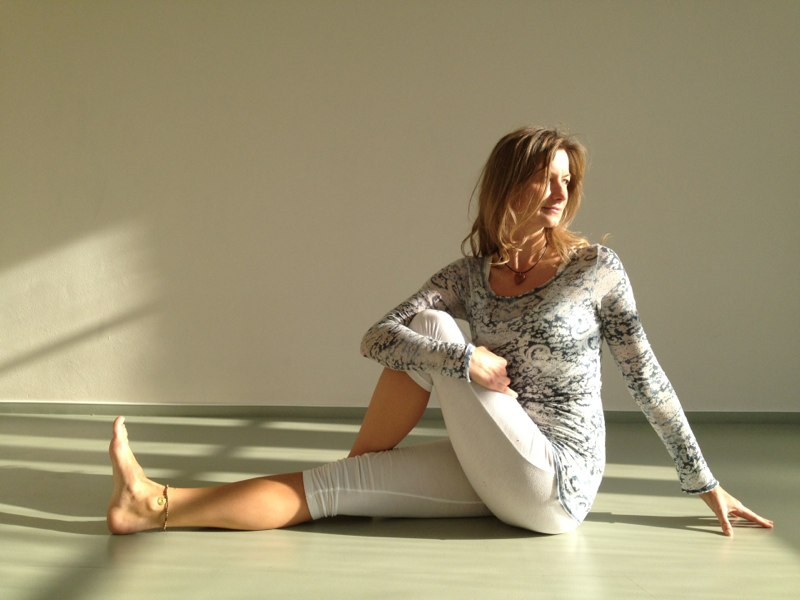

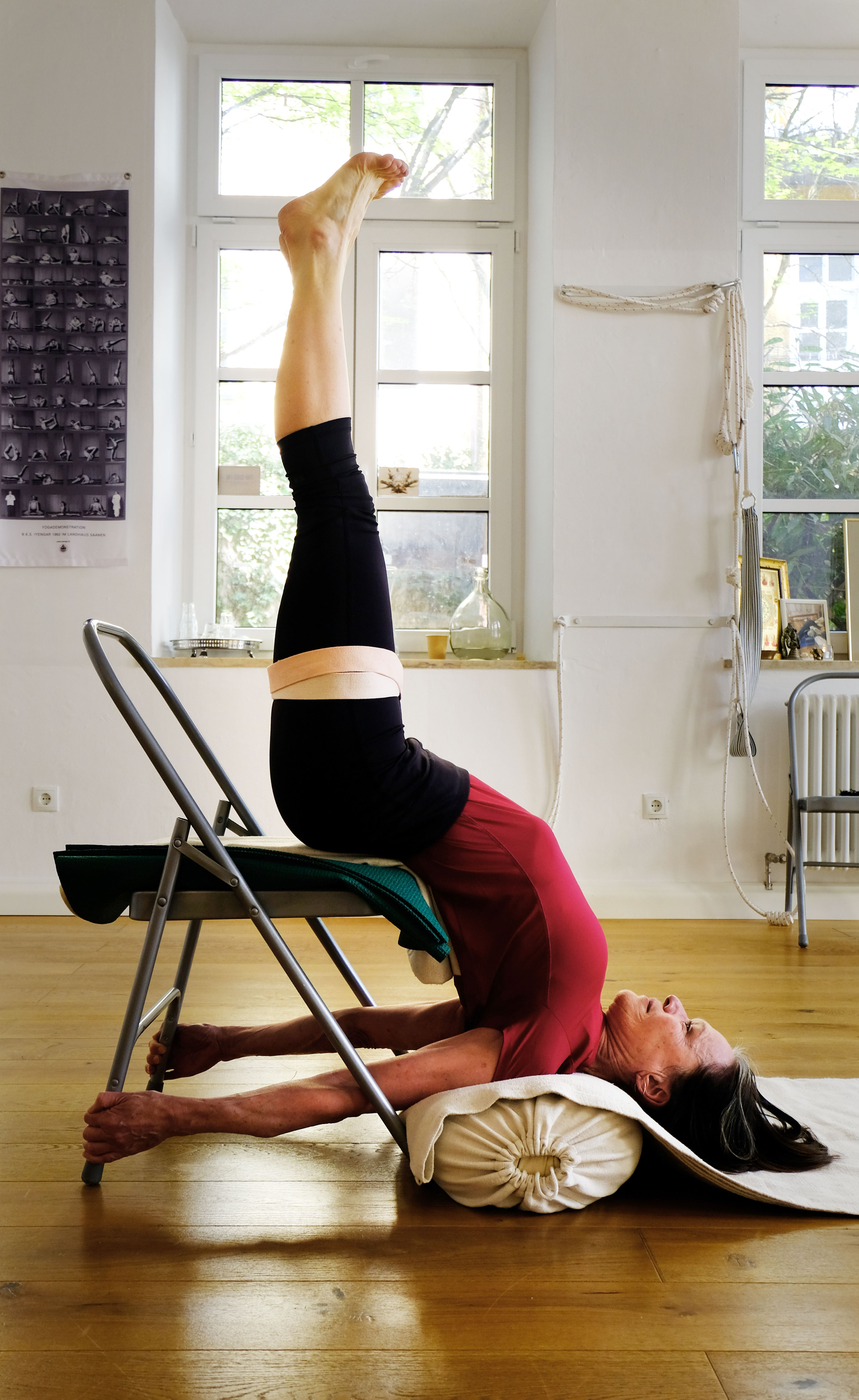
.jpg)
